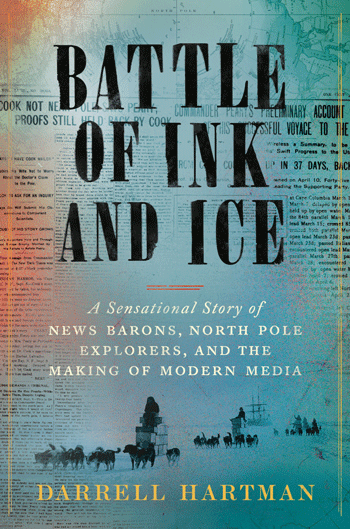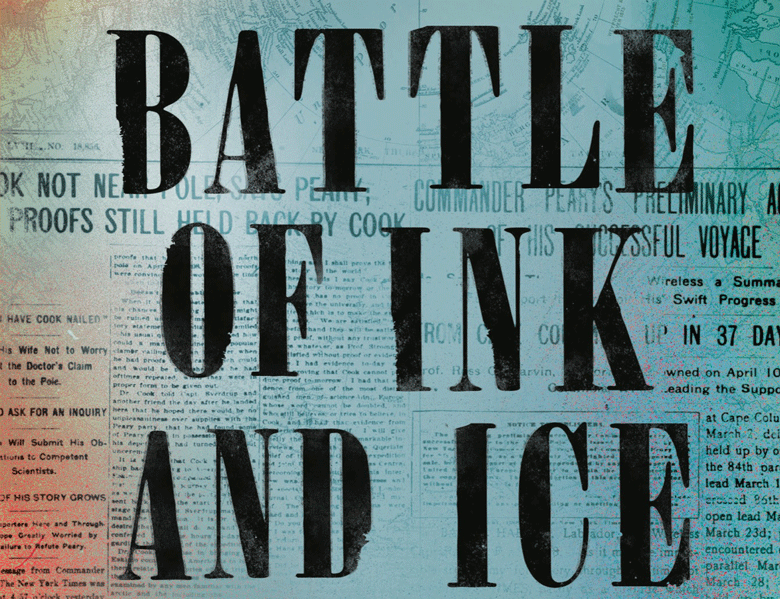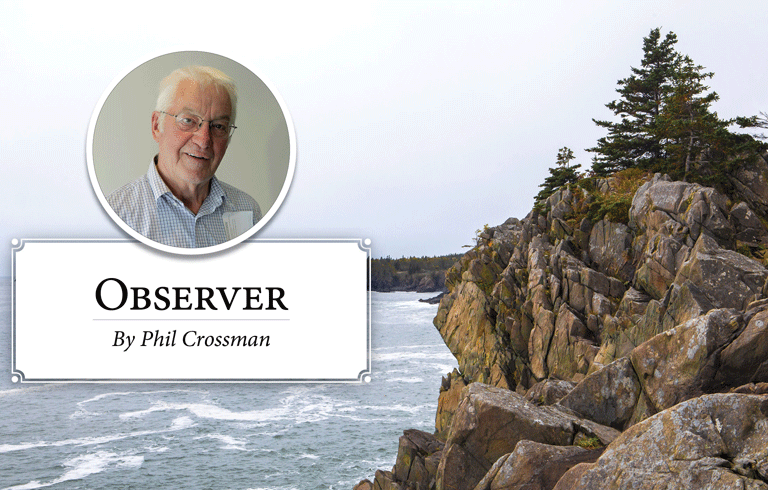Battle of Ink and Ice: A Sensational Story of News Barons, North Pole Explorers, and the Making of Modern Media
By Darrell Hartman; Viking (2023)
One of the things you come to realize as you learn how history unfolds is that everything is connected. In fact, the interconnections are so complex that eventually you realize history isn’t even linear, as you’re innocently led to believe in grade school.
A new book that clearly illustrates these notions is Battle of Ink and Ice by Maine native Darrell Hartman. On the face of it, the book’s two basic subjects seem unrelated: the quest of explorers to reach the North Pole in the late 19th and early 20th centuries, and the history of newspapering around the same time. It turns out the two strands are intimately interconnected.
There were many ill-fated attempts to reach the North Pole around the turn of the century. But the main story came to revolve around two explorers in particular, Robert Peary, a Maine native and Bowdoin College graduate, and Frederick Cook.
The race to the North Pole was promoted and to different extents funded by The New York Times…
In thoroughly researched detail, Hartman describes the journeys north from outposts along barely charted island territories inside the Arctic Circle and across sheer ice pack. Whole expeditions were reduced to a few haggard survivors or disappeared completely. Peary himself in one ill-advised winter trek suffered frosbite that resulted in the painful loss of his toes, nearly preventing him from further pursuing his burning ambition to be the first to stand on the North Pole.
In these expeditions, taking and even recording latitude and longitude readings to prove locations were forbiddingly difficult. When Cook suddenly returned in September 1909 from his last effort to reach the pole, a reporter for a London newspaper noticed with suspicion that the renowned explorer answered questions vaguely about, not only the journey, but also his documentation, which should include descriptive journals as well as detailed logs of the expedition’s geographic location. Cook told reporters he had stashed his books at an outpost and would be retrieving them later. It was a long time before Cook came up with his evidence.

That Cook spoke with reporters was no coincidence. For intimately connected to the story of Arctic exploration were newspapers. Publishers and editors in the mid-1800s discovered they could not only report events, but actively create them. Hartman recounts in some detail how Stanley’s famous search for Livingstone in central Africa was organized by newspapers to gain stories they could splash over their front pages.
The race to the North Pole was promoted and to different extents funded by The New York Times, which threw support behind Peary, and by the New York Herald, which backed Cook.
The Herald’s flamboyant publisher, James Bennett, followed risky whims, sometimes succeeding wildly, as when he turned the new telegraph technology into a boon to breaking news, and sometimes failing horribly, as when an effort to manufacture polar-quest stories led to a terrible, avoidable disaster for an entire expedition.
In Hartman’s skillful telling, we see how the news media whipped up the popular appetite for stories about the pole despite the fact that many turn-of-the-century scientists regarded the efforts of the explorers as more or less irrelevant. Along the way, we get deft portraits of all the players, including the egotistical Peary, the evasive Cook, the mercurial Bennett, and the Times’ stolid Adolph Ochs, as well as Joseph Pulitzer, who recognized that his New York World and other papers such as the New York Sun were dancing with what he called, shortly before the turn of the 20th century, “fake news.”
In the end, it was never established that either Cook or Peary had actually stood at the North Pole. Probably neither did. The claims, it turned out, were a concoction of the news media and gigantic egos.
History circles back on itself.
Battle of Ink and Ice provides the illuminating backstory of the news media we know and feel ambivalent about today.
Dana Wilde is a former college English professor and newspaper editor. He lives in Troy.





